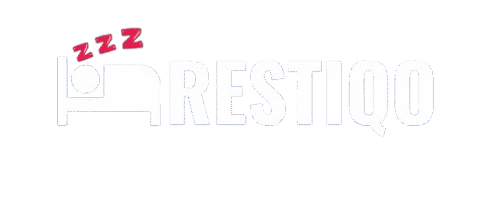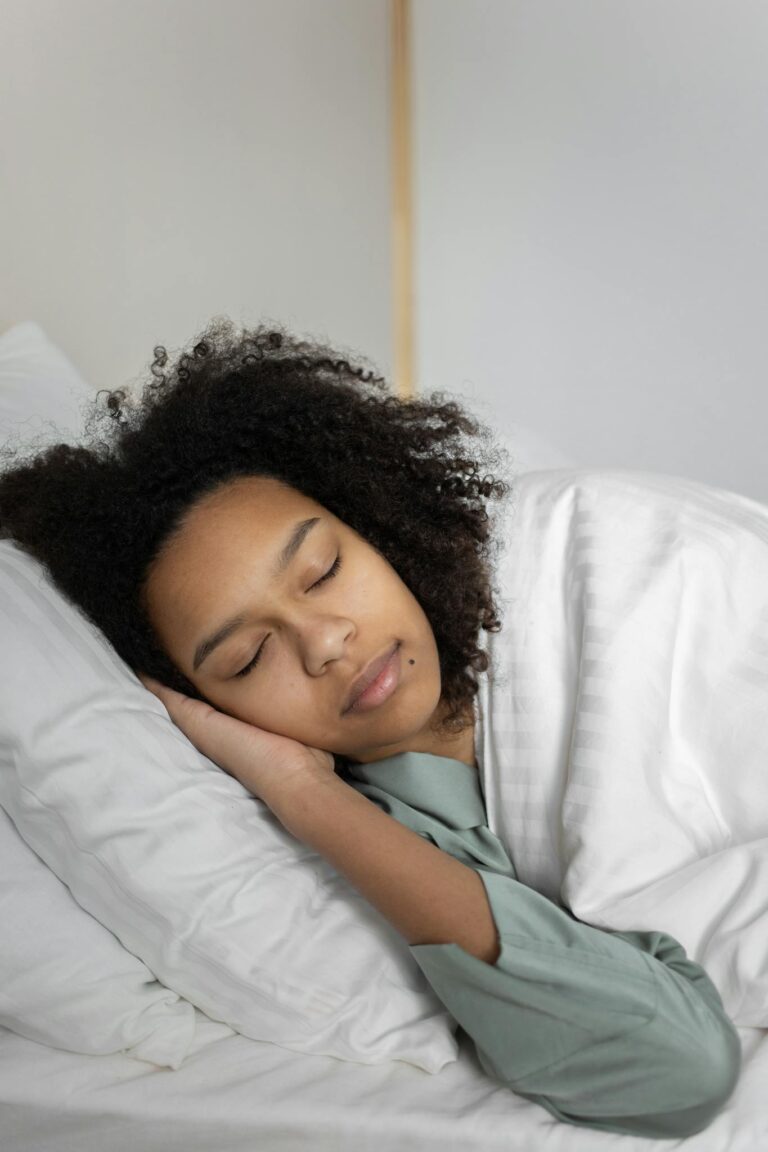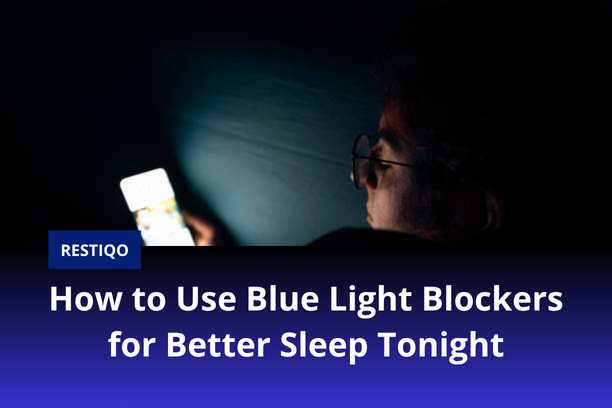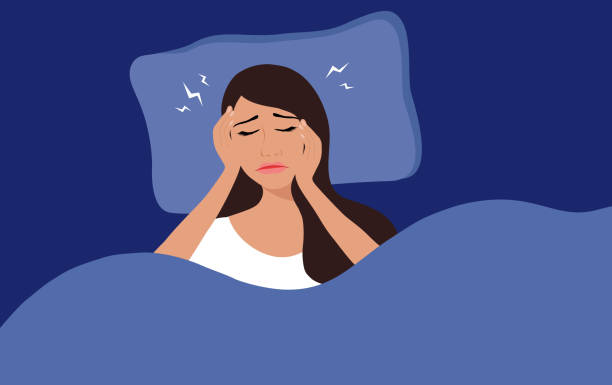
At 4:30 AM, Apple CEO Tim Cook is already pounding the pavement or clearing his inbox.
By 7:00 AM, Oprah Winfrey is halfway through her morning meditation and tea ritual.
And somewhere in L.A., a startup founder hasn’t even gone to bed yet.
So, who’s doing it right?
Trick question.
Despite what LinkedIn hustle culture wants you to believe, there’s no single “CEO-approved” bedtime. But there is one thing high performers who don’t burn out have in common: they align their schedules with their biological chronotype.
A chronotype is your internal sleep-wake rhythm. It’s the reason some people leap out of bed at 5 AM while others hit their creative stride after midnight. Ignoring it? That’s like trying to swim upstream every day.
This article isn’t about shaming night owls or glorifying early birds. It’s about understanding your body’s peak focus windows and building a performance-driven routine that works with your brain, not against it.
If you’ve ever felt like you’re dragging through someone else’s schedule, keep reading. Your chronotype might be the productivity unlock you didn’t know you needed.
What Are Chronotypes (And Why They Matter for Success)
Your chronotype is like your body’s personal time zone.
It’s the internal wiring that decides whether you’re sharpest at dawn or dangerous before coffee. It’s not just preference — it’s biology. Specifically, it’s tied to your circadian rhythm, the 24-hour clock that regulates your sleep, energy, and hormones.
Researchers have categorized most people into one of four main chronotypes:
- Lion – Early risers who peak before lunch and power down by 9 PM.
- Bear – Middle-of-the-road folks who follow the sun and thrive on a classic 9–5.
- Wolf – Natural night owls who hit their groove in the late afternoon and evening.
- Dolphin – Light sleepers with irregular sleep cycles and anxious minds.
Each chronotype has its own prime time for thinking, creating, and resting. And trying to fight it? That’s a shortcut to burnout, brain fog, and that “Why am I exhausted even after 8 hours?” feeling.
Knowing your chronotype means you can stop guessing and start building routines that actually fit your biology. That’s not woo-woo wellness fluff – that’s neuroscience-backed optimization.
👉 Not sure what you are? Take this chronotype quiz to find out.
Why High Performers Burn Out Without Chronotype Awareness
High performers don’t just run out of time – they run out of mental bandwidth.
When your calendar is packed, your inbox is a warzone, and your Slack is on life support, you can’t afford to waste energy fighting your biology.
But that’s exactly what happens when you ignore your chronotype.
Waking up at 5AM because some podcast guru said so? If you’re a Wolf, you’re not getting ahead – you’re setting fire to your focus and hoping for the best.
Here’s what the science says:
🔹 A study in the journal Current Biology found that mismatched sleep schedules (like forcing night owls to rise early) reduce cognitive performance, emotional regulation, and memory recall – all traits critical to executive function.
🔹 Long-term sleep-wake mismatch is linked to higher stress levels, more errors, and – you guessed it – burnout.
CEOs who win the long game don’t just sleep more – they sleep smarter. They align their peak focus zones, deep work blocks, and recovery windows to match their biological clock.
Bottom line? Your chronotype isn’t a weakness. It’s a strategy. Ignore it, and you’ll pay in fog, fatigue, and failure.
Chronotype-Based Sleep Strategies That Actually Work
Morning Lion Strategy: Wake Early, Win Early
If you’re a Lion, you probably wake up before your alarm… or before your kids… or before the sun remembers to rise.
Best sleep window: 9:30 PM – 5:30 AM
Peak focus time: 6:00 AM – 11:00 AM
Here’s how Lions dominate:
- Front-load your deep work. Get your hardest, brain-heavy tasks done before lunch.
- Schedule meetings between 9AM–11AM. That’s when your verbal fluency and patience are both alive.
- Avoid evening commitments. After 6PM, your brain wants a blanket and a blackout curtain.
Pro tip: Lions should avoid stimulants late in the day – caffeine after 2PM wrecks their early wind-down window.
Bear Blueprint: Ride the Circadian Middle Ground
Most people are Bears. They wake with the sun and fade with it, too – the “Goldilocks” of sleep biology.
Best sleep window: 10:30 PM – 6:30 AM
Peak focus time: 10:00 AM – 2:00 PM
Here’s how Bears thrive:
- Batch your focused work between mid-morning and early afternoon.
- Hold meetings before 3PM. Decision-making declines after that.
- Don’t fight your dip. That 2PM slump? It’s real. Try walking, hydrating, or a 10-minute stretch instead of fighting through brain fog.
Pro tip: Bears benefit most from sleep consistency – even a one-hour bedtime shift can mess with their rhythm.
Night Owl (Wolf) Optimization: Late Starts, Late Wins
Wolves hit their stride when everyone else is winding down. Forcing them to show up early is like asking a cat to do calculus.
Best sleep window: 12:00 AM – 8:00 AM
Peak focus time: 4:00 PM – 9:00 PM
Here’s how Wolves hunt best:
- Schedule deep work for late afternoon. Your brain lights up just as others fade.
- Avoid early meetings. You’ll look awake, but your brain’s still buffering.
- Use your late-night energy wisely. Wind down with intention – not Instagram.
Pro tip: Wolves can slowly shift their schedule earlier by 15-minute increments per week – combined with early-morning sun exposure.
The Restless Dolphin Protocol: For Anxious Achievers
Dolphins are light sleepers with a tendency toward insomnia and fragmented rest. They’re smart, alert — and constantly battling their own mind.
Best sleep window: 11:30 PM – 6:30 AM (with variability)
Peak focus time: 9:00 AM – 12:00 PM
Here’s how Dolphins stay afloat:
- Establish a rigid wind-down ritual. Same time, every night — no exceptions.
- Avoid screens and news late at night. Your brain is wired for worry.
- Use white noise, blackout curtains, and a consistent wake time. Your body needs predictability more than perfection.
Pro tip: For Dolphins, winding down starts right after dinner. Try journaling, stretching, or reading before the anxiety avalanche begins.
How to Build a CEO Sleep Routine That Works for Your Chronotype
Not all “morning routines” are created equal because not all brains wake up ready to crush life at 5:00 a.m.
Your chronotype (your biological sleep-wake rhythm) influences when you feel most alert, focused, creative, and tired. Trying to copy a billionaire’s 4:30 a.m. grind while your brain still thinks it’s midnight? That’s a shortcut to burnout.
The smarter move: align your sleep and productivity with your chronotype instead of fighting it.
🦁 Lion (The Early Riser)
Peak Hours: 6 a.m. to 12 p.m.
Best Sleep Window: 9 p.m. to 5 a.m.
Lions are the type who voluntarily wake up before sunrise — and like it. They’re sharpest early in the day but may crash hard by early evening.
Chronotype Strategy:
- Block off early mornings for deep work and big decisions.
- Wind down by 8:30 p.m. with reading, stretching, or journaling.
- Avoid late-night screen use — your body’s ready for sleep before primetime TV ends.
Habit Stack Example:
- Wake at 5:30 a.m. →
- Light exposure and hydration →
- Deep work session (no meetings) →
- Finish intense tasks by noon →
- Light exercise or admin in the afternoon →
- Bed by 9:00 p.m.
🐻 Bear (The Balanced Majority)
Peak Hours: 10 a.m. to 2 p.m.
Best Sleep Window: 10:30 p.m. to 7 a.m.
Bears follow the sun. They make up about 50% of the population and function best when they don’t mess with their schedule.
Chronotype Strategy:
- Schedule mentally demanding tasks mid-morning to early afternoon.
- Use the post-lunch lull for low-focus activities like admin or meetings.
- Avoid evening caffeine, and keep screens off 1 hour before bed.
Habit Stack Example:
- Wake at 7 a.m. →
- Morning walk + breakfast →
- Deep work from 10–2 →
- Light movement or social catch-ups in the evening →
- Sleep by 10:30 p.m.
🐺 Wolf (The Night Owl)
Peak Hours: 4 p.m. to 10 p.m.
Best Sleep Window: Midnight to 8 a.m.
Wolves are late-night thinkers. They often struggle with traditional 9–5 schedules but thrive in creative or asynchronous work environments.
Chronotype Strategy:
- Avoid scheduling anything meaningful before 10 a.m.
- Use late afternoon and evening hours for focused, creative work.
- Practice a solid wind-down ritual to avoid doomscrolling into 3 a.m.
Habit Stack Example:
- Wake at 8:30 a.m. →
- Light activity + delayed caffeine →
- Admin tasks until 2 p.m. →
- Deep work block from 4–9 p.m. →
- Blue-light blockers + mellow music →
- Sleep by midnight.
🐬 Dolphin (The Restless Sleeper)
Peak Hours: Variable, but typically late morning and early evening
Best Sleep Window: 11:30 p.m. to 6:30 a.m.
Dolphins are light sleepers who struggle to fall or stay asleep. They often deal with anxiety, overthinking, and inconsistent energy.
Chronotype Strategy:
- Keep a rigid wind-down routine to signal bedtime.
- Use morning sunlight and regular wake-up times to regulate your rhythm.
- Avoid multitasking and overbooking — your energy is precious and fluctuates.
Habit Stack Example:
- Wake at 6:30 a.m. →
- Light exposure, meditation →
- Focus work mid-morning →
- Light afternoon break (walk, nap) →
- Calm wind-down at 10 p.m. (no screens) →
- Sleep by 11:30 p.m.
How to Track and Test Your Chronotype (Without Guesswork)
Guessing your chronotype is like diagnosing yourself with WebMD — you’ll probably end up wrong and panicked.
Instead of winging it, here’s how to track your real sleep-wake patterns and energy rhythms without wearing a lab coat.
1. Run a 7-Day Sleep Journal Experiment
Before you download another quiz or app, try this low-tech option: a pen, paper, and brutal honesty.
Every day for 7 days, write down:
- When you fall asleep and wake up (naturally, if possible)
- When you feel most alert, creative, or focused
- When you crash or zone out mentally
- Any caffeine, stress, or weird routines
Look for patterns. Are your deep focus windows always around 10 a.m.? Do you crash hard at 2 p.m. no matter what?
That’s your internal clock waving at you.
2. Track Energy Peaks and Crashes Like a Biohacker
Don’t just track sleep. Track performance.
Set reminders 3–4 times a day to log how focused, energized, or foggy you feel (1–10 scale works fine).
After a few days, you’ll see your cognitive “golden hours” — and know when not to schedule meetings or high-stakes decisions.
3. Use a Sleep Tracker (If You’re a Data Nerd)
If journaling feels like a chore, use tech. Tools like:
- Oura Ring (highly accurate, expensive)
- Whoop (great for recovery-focused folks)
- Sleep Cycle (solid app with sleep phase alarms)
These help you monitor REM, deep sleep, sleep latency, and recovery scores — and some even estimate your chronotype after a few nights of data.
Pro tip: Ignore the daily “sleep score” obsession. Focus on trends: how you feel versus how the data looks.
4. What to Tweak First If It’s Not Working
If your energy still doesn’t align with your sleep-wake times:
- Adjust bedtime earlier/later by 15–30 minutes for 3–5 days
- Add consistent morning light exposure (get outside within 10 minutes)
- Eliminate late-night blue light or heavy meals
- Stop switching sleep schedules on weekends (you’re not a vampire)
Your chronotype won’t change overnight — but your habits can stop fighting it.
Chronotype Hacks from Real-World Executives
Forget what the hustle-porn influencers told you — not all successful people wake up at 4:30AM and run a marathon before breakfast.
Here’s how some real high-performers tailor their routines with their chronotype, not against it:
🟨 Jeff Bezos: The Bear with Boundaries
- Wake time: Around 7AM
- First meeting: Not before 10AM
- Sleep priority: High. He guards his 8 hours like a dragon hoards gold.
Takeaway: Bezos doesn’t sprint out of bed. He builds in slowness early in the day. If you’re a Bear, this is your permission slip to ditch the 6AM meeting.
🟦 Tim Cook: The Ultra-Early Lion
- Wake time: 3:45AM (yes, really)
- Workout: Before sunrise
- Workday: Starts before most people even hit snooze
Takeaway: Cook is a Lion on steroids. If you feel naturally wired for dawn domination, own it – just don’t assume it’s for everyone.
🟧 Oprah Winfrey: The Balanced Dolphin
- Wake time: Around 6:00AM
- Morning ritual: Journaling, meditation, spiritual reading
- Focus window: Mid-morning to early afternoon
Takeaway: Oprah leans into intentional quiet time. If you struggle with fragmented sleep (classic Dolphin), bookend your day with stillness.
🟪 Elon Musk: The Sleepless Enigma
- Reported sleep: 6 hours per night
- Chronotype guess: Likely a Wolf (night-active, creative)
- Method: Spontaneous, tech-enhanced routines
Takeaway: Musk is an outlier – not a role model. Tech CEOs often rely on micro-adjustments and tracking. But don’t copy chaos. Borrow the data-driven habits, not the insomnia.
💡 Want to Build Your Own CEO Sleep Routine?
Start by identifying your chronotype. Then reverse-engineer your ideal day.
The best routine isn’t the most hardcore. It’s the one that fits your biology like a glove.
FAQs: Chronotypes, Sleep, and High Performance
Q1: What is the best chronotype for success?
There’s no universal “best.” What matters most is aligning your work, rest, and routines with your chronotype. Whether you’re a Lion who thrives before sunrise or a Wolf who hits peak stride at night, success comes from building around your biology not fighting it.
Q2: Can I change my chronotype?
Not drastically. Your chronotype is biologically rooted. However, you can shift your sleep window slightly using consistent wake times, evening wind-down cues, and morning light exposure. It’s about nudging, not overhauling.
Q3: How do I know my chronotype?
Start with a chronotype quiz (like this one from The Sleep Doctor) or track your natural sleep-wake cycles and energy peaks for 7–10 days. Pay attention to when you feel most alert, creative, or sleepy — your body keeps score.
Q4: Do CEOs really sleep less?
Some do but most smart ones don’t sacrifice sleep for hustle. High performers prioritize quality sleep and design their schedules to protect it. It’s not about sleeping less; it’s about sleeping smarter.
Q5: Can chronotype-based routines help with burnout?
Yes. Burnout often starts with poor recovery. When your work and sleep are misaligned with your biological rhythm, mental fatigue and stress pile up. Chronotype-driven routines restore energy predictably, making you sharper, calmer, and more productive long-term.
Q6: Can my chronotype change with age?
Yes, chronotypes shift over time. Teens tend to be natural night owls, while adults often skew earlier. By your 60s, you may wake with the birds whether you want to or not. Hormones, lifestyle, and light exposure all play a role.
Q7: Are there tools to help chronotype alignment?
Absolutely. Smart light alarms, blue light blockers, melatonin (used sparingly), and apps like Rise, Timeshifter, or Oura can help nudge your body into better sync with your ideal schedule. The key is consistency and tracking.
Conclusion: Match Your Sleep to Your Biology Then Watch What Happens
You’ve probably tried the 5AM club. Maybe even the midnight grind. But if those routines left you groggy, foggy, and craving six espressos before noon – you’re not broken. You’re just out of sync with your chronotype.
High performers don’t just work harder. They recover smarter.
When you align your sleep and productivity with your internal clock, your energy spikes feel natural, your focus sharpens without effort, and burnout becomes a distant memory.
Start experimenting. Notice when you feel most alert, creative, or drained. Then structure your day around that, not some guru’s schedule.
Your brain isn’t a machine. It’s a rhythm instrument. Tune it.





